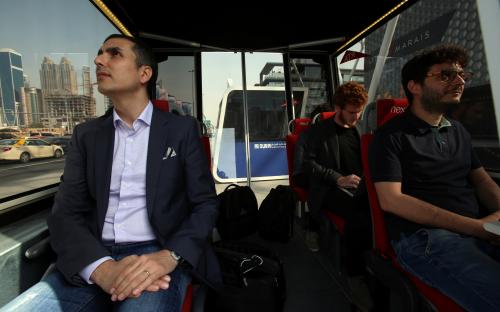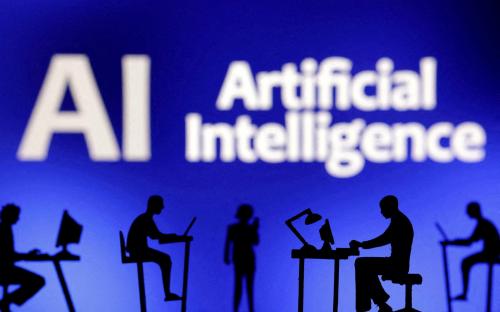Since its inception some sixty years ago, artificial intelligence (AI) has evolved from an arcane academic field into a powerful driver of social and economic change. AI is now the basis for a wide range of mainstream technologies including web search, medical diagnosis, smart phone applications, and most recently, autonomous vehicles. Deep learning—a form of machine learning based on layered representations or neural networks—has dramatically improved pattern recognition, speech recognition, and natural language processing.
In 2013, the Oxford Martin School published a report predicting that 47 percent of jobs in the United States could be under threat of automation within two decades due to advances in AI technologies. Last year, the Obama administration raised similar concerns in a presidential report on AI. The White House report, entitled “Artificial Intelligence, Automation and the Economy”, concluded that AI-driven automation suggests the need for aggressive public policies and a more robust safety net in order to combat labor disruption. Of course, predictions on total number of job losses is fundamentally uncertain, but according to a recent study by McKinsey, technology is expected to automate portions of jobs over the next decade.
Given the prospects of an economic future in which large swaths of the working population are at risk of losing their jobs or seeing them diminish in quality, how might government mitigate the impact of AI? A recent report from the University of Toronto’s Mowat Centre has explored this conundrum in some detail, outlining potential options for policymakers to consider. In the near-term, and with relatively little difficulty, governments can look to their own mandates and to partnerships with the private sector and organized labor to consider the following social policies:
- More flexible work arrangements for both private and public sector employers, modeled on Germany’s Kurzarbeit scheme (designed to allow companies to reduce workers’ hours during economic downturns). Scaling back hours for 50 workers whose tasks are automated is a preferable outcome to layoffs for 10 workers.
- Promoting private sector education and training programs that re-train workers to adapt to new, more complex and technologically advanced operating environments. AT&T in the United States, for example, offers up to $8,000 a year towards tuition for degrees and online courses to its employees. Government tax rebates or co-sponsorships of similar programs could help incentivize smaller enterprises to consider similar programs.
- Reassessing the role of government as a purchaser of goods and services with an eye toward driving innovation. The US federal government spends over $400B a year on contracts (two-thirds by the Defense Department) and already targets some of those funds to help small businesses. If government procurement practices can help create and sustain better quality work where merited, that should be a priority. Tying procurement expenditures to job quality expectations throughout the supply chain could benefit young people and others disproportionately impacted by the rise of precarious work.
- Redoubling efforts to streamline from public service delivery, in light of fiscal constraints and expected increases in demand for social supports flowing from anticipated demographic and labor market trends. With 850,000 public sector jobs in Britain potentially at risk due to automation, a key focus for governments in advanced economies must be frank conversations about managing the transition into an automated future.
Other options that merit consideration over the longer-term that may come with significant cost and implementation challenges include program and policy adjustments such as:
- A reform of labor market support programs to promote more flexibility for employees and employers, with a strong emphasis on practical, quick outcomes-focused training. Recognizing that more people may be out of work for longer, and bouncing between jobs more frequently, will require rethinking unemployment schemes to make them more generous and more actively relevant by incorporating training.
- Introducing portable benefits for independent workers so that pension and health care benefits can be taken from gig to gig while requiring contributions from technology platforms that employ these workers. It is time to modernize employment classifications for independent workers, to focus on the nature of their work.
- Adopting more effective approaches to capturing corporate taxes from technology companies and grey market activities in order to fund social programs such as training or housing. Coordinated efforts to combat tax evasion could be worth, conservatively, between $100 billion and $240 billion.
Progressive tax regimes that fund effective education, income support, health and housing programs will become more important in a future where many are working fewer hours for less pay. Policymakers need to acknowledge that dwindling work in the era of AI may look entirely different from the past. Deploying efforts to prepare for that future will go a long way to mitigating the potentially far-reaching impacts of automation on millions of workers around the world.





Commentary
Work and social policy in the age of artificial intelligence
February 28, 2017